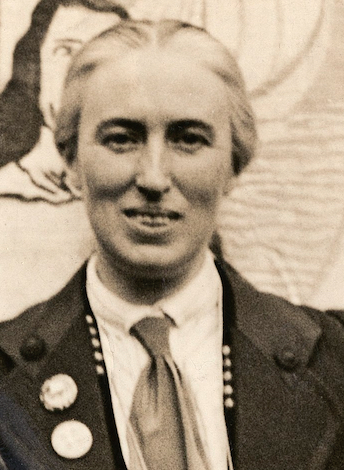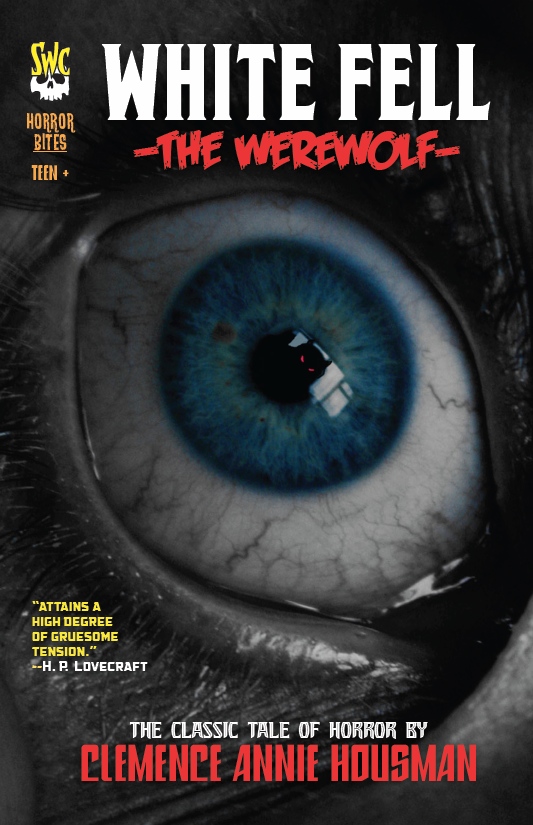
Born on this day in 1861, in Bromsgrove, England, Clemence Annie Housman grew up to lead quite an interesting life. An 1883 graduate of the South London School of Technical Art, she became an engraver and children’s book illustrator, but was probably best known for her work as a supporter of women’s rights.
In 1909 she and her brother, Laurence, founded the Suffrage Atelier, an artists’ collective that campaigned for women’s suffrage; she also designed banners for suffrage demonstrations. The following year, she joined the Women’s Tax Resistance League, which (according to Wikipedia) “used tax resistance to protest against the disenfranchisement of women” during the suffrage movement in England. As a result of her involvement in the latter organization, she was arrested and sent to prison for nonpayment of taxes in 1911, but was released after a week following public protests.
Outside her political work, Housman illustrated two books written by Laurence: The Blue Moon, published in 1904, and Moonshine & Clover, published in 1922. (Laurence, too, was an accomplished writer, as well as a playwright.)
Clemence Annie Housman passed away on December 6, 1955, at the age of 94.
So why are we celebrating Ms. Housman’s accomplishments here at ’Warp Central? Because she wrote three novels during her lifetime: Unknown Sea, published in 1898; The Life of Sir Aglovale De Galis, published in 1905; and her most famous work, The Were-wolf, published in 1896—which, as White Fell: The Werewolf, became the launch title for SWC Horror Bites, our e-book chapbook series that reprints classic horror stories.

White Fell: The Werewolf is regarded by scholars as perhaps the first feminist werewolf story. In it, a beautiful woman named White Fell wanders into a snowbound village—and into the hearts of twin brothers, one of whom immediately becomes smitten by her. The other brother, however, soon grows suspicious of the enigmatic White Fell. Where did she come from? Why does she always carry an ax? And is her sudden appearance somehow related to the recent sightings of a bloodthirsty wolf in the area? He may come to regret being so inquisitive…
Critics have certainly enjoyed this horror classic:
“White Fell is a powerful, independent woman, a fur-slinging, axe-wielding huntress descended straight from Hyperborea, [and] Housman shuns all of the werewolf traditions so dully repeated in many tales written before and after. White Fell is either a revenant from Valhalla or maybe just a good girl gone lupine.”—The Scream Factory
“For Housman, the female werewolf is a vehicle for her to present a strong feminist-inspired female character…. It is possible that Housman was telling the world that women had a hidden strength and that men should beware of their own hidden nature.”—The Nuke Mars Journal of Speculative Fiction
White Fell: The Werewolf is available for download from the SWC webstore, so visit its product page for ordering information.






